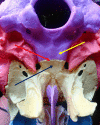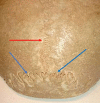Cranial Osteopathy: Obscurantism and Enlightenment
- PMID: 31355089
- PMCID: PMC6649880
- DOI: 10.7759/cureus.4730
Cranial Osteopathy: Obscurantism and Enlightenment
Abstract
The application of cranial osteopathic manipulative medicine (OMM) is always controversial in the literature. Primary respiration related to the movement of spheno-basilar synchondrosis in the adult goes against the knowledge of complete ossification that occurs at this articulation after the pubertal phase. The idea that the operator's hands can communicate with the meninges is difficult to accept. The anatomy shows us that the fascial system involves the meninges and that from the microcellular point of view there are no layers that divide one tissue from another. The backing of new sciences, such as quantum physics, suggest that cranial palpation allows the osteopath to come into contact with the meninges. Recent scientific evidence shows that meningeal afferents can affect extracranial areas and that the pericranial musculature itself is able to influence these afferents. The article highlights some reflections in support of cranial osteopathy, based on scientific information that could help the osteopath to improve clinical work.
Keywords: cranio; fascia; neurophysiology; osteopathic; quantum physics.
Conflict of interest statement
The authors have declared that no competing interests exist.
Figures



References
-
- Cranial osteopathic manipulative medicine's growing evidence base. King HH. https://www.ncbi.nlm.nih.gov/pubmed/22302741. J Am Osteopath Assoc. 2012;112:9. - PubMed
-
- Therapeutic effects of cranial osteopathic manipulative medicine: a systematic review. Jäkel A, von Hauenschild P. https://www.ncbi.nlm.nih.gov/pubmed/22182954. J Am Osteopath Assoc. 2011;111:685–693. - PubMed
-
- Sutherland's legacy in the new millennium: the osteopathic cranial model and modern osteopathy. Bordoni B, Zanier E. https://www.ncbi.nlm.nih.gov/pubmed/25831430. Adv Mind Body Med. 2015;29:15–21. - PubMed
Publication types
LinkOut - more resources
Full Text Sources
